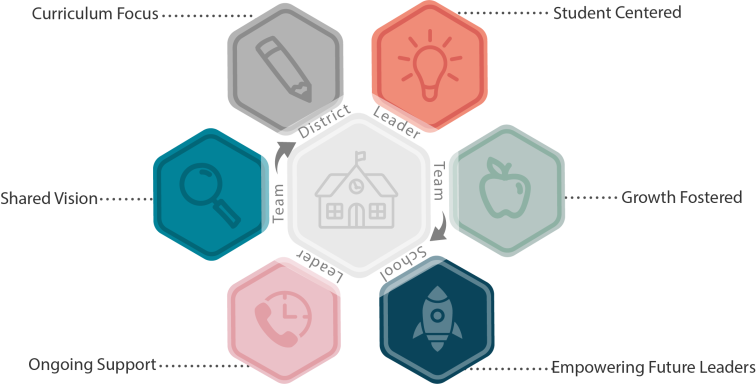In today’s rapidly evolving technological landscape, integrating technology into education has become a necessity rather than a luxury. Due to school complexity, one leadership style cannot be applied to all leadership tasks (Hersey, 1985), including effective technology-enhanced teaching and learning in the classroom. Researchers must also pay attention to the school system’s multi-level structure to avoid the risk of ignoring influence within its complex layers (Law et al., 2016; Liu et al., 2016). The Team Empowered Leadership Model (TELM) is a research-based model to assist 21st-century leadership while addressing the system’s multi-level influences.
The Team Empowered Leadership Model (TELM) is a multi-level school leadership model based on the relationship and key elements needed to promote and foster effective technology-enhanced teaching and learning. Effective technology-enhanced teaching and learning is an essential strategy for improving educational quality (Collins & Halverson, 2018; Ghavifekr & Rosdy, 2015; Law et al., 2016; Trentin, 2012). The core components of TELM are a shared vision, curriculum focus, student-centered, growth fostered, empowering future leaders, and ongoing support.

TELM is not a one-size-fits-all model. Instead, the key elements can be molded for a variety of situations including the size of the district and/or school. Utilizing this model is a personalized experience addressing various elements such as technology skills and existing leadership styles.
Empower your leadership for the rapidly evolving technological landscape! Reach out for more information.
Collins, A., & Halverson, R. (2018). Rethinking education in the age of technology: The digital revolution and schooling in America (technology, education–connections (the tec series)) (2nd ed.). Teachers College Press.
Ghavifekr, S., & Rosdy, W. (2015). Teaching and learning with technology: Effectiveness of ICT integration in schools. International Journal of Research in Education and Science (IJRES), 1(2), 175-191.
Hersey, P. (1985). The situational leader (4th ed.). Warner Books.
Law, N., Niederhauser, D. S., Christensen, R., & Shear, L. (2016). A multi-level system of quality technology-enhanced learning and teaching indicators. Journal of Educational Technology & Society, 19(3), 72-83. www.jstor.org/stable/jeductechsoci.19.3.72
Liu, F., Ritzhaupt, A. D., Dawson, K., & Barron, A. E. (2016). Explaining technology integration in k-12 classrooms: A multi-level path analysis model. Educational Technology Research and Development, 65(4), 795-813. https://doi.org/10.1007/s11423-016-9487-9
Trentin, G. (2012). Introduction to a special issue: Educational technology in Europe. Educational Technology Publications, Inc., 52(2), 3-5. https://www.jstor.org/stable/44430019






